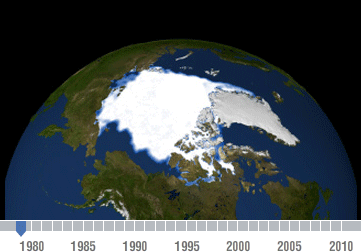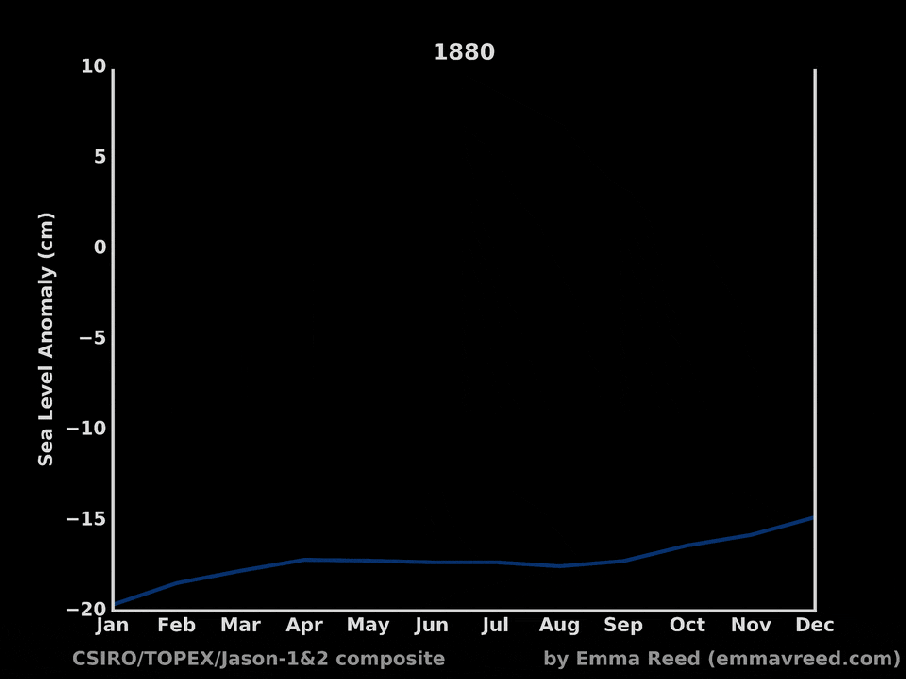1.5: The Paris Agreement aims “to limit the temperature increase to 1.5oC”, a threshold we have almost reached.
97%: The percentage of scientists who agree that global warming trends over the past century are very likely caused by human activity.
115,000 Years: When the world was last this warm.
4 Million Years: When the planet experienced such high levels of carbon dioxide (CO2) in the atmosphere.
1950: Atmospheric CO2 levels broke records from the previous 400,000 years, sharply rising and continuing to grow.
2019: capped world’s hottest decade in recorded history with 2016 being the hottest year to date.
28%: Rainforests are responsible for roughly one-third (28%) of the Earth’s oxygen
70%: but most of the oxygen in the atmosphere is produced by marine plants.
30%: Increase in acidity of the world’s oceans.
50%: Coral reef in the Great Barrier Reef affected by bleaching.
8 inches (203mm): Rise in global sea levels over the last century. This rise has nearly doubled in the last two decades.
50%: Up to half of all species could be lost by the end of this century.
14%: Irish winters are expected to become wetter by mid-century.
20%: Increased frequency of heavy precipitation events during Irish winters.
5%: Average increase in Irish annual rainfall.
192%: Expected increase of people living in Irish coastal flood-prone areas.
400 Million: 4.5million Irish people emit the same amount of greenhouse gases as the poorest 400 million people on the planet.
0.1%: Climate change would cost less than 0.1% of GDP a year to address.
CO2 levels over past 400,000 years

Arctic Sea-ice Decline

Sea-Level Anomaly since 1850

Climate Science
Causes:
- Light waves travel from the sun to Earth’s atmosphere. Visible light has a short wavelength and slices through the atmosphere unimpeded. Some reflects from the surface of the earth (by clouds, ice and other reflective surfaces) and is re-radiated back into space. The rest is absorbed by the natural greenhouse gas layer and some small sooty solids that are found in our atmosphere because of burning fossil fuels like coal and wood.
- This natural layer of greenhouse gases (GHG) is being thickened by human activities. Carbon dioxide (CO2) concentrations have increased by 40% since pre-industrial times, mainly from fossil fuel burning, and secondly from changes in how we use our land, agriculture and deforestation. [1]
- As the greenhouse gas layer gets thicker more of the outgoing infrared radiation (heat) becomes trapped and so the temperature of our oceans and the air goes up. [2]
- The atmosphere is not a vast, limitless space as we might imagine. It is a thin band and is equivalent to the skin of an apple, if comparing earth to an apple. We are putting 110 million tons of global warming pollution into that small space every hour!
- The planet has not experienced such high levels of carbon dioxide (CO2) in the atmosphere for 4 million years [3]
- The world was last this warm about 115,000 years ago when sea level was 6-9 meters (20-30ft) higher than today [4]
Effects:
- The extra heat (energy) in the atmosphere has multiple effects. The intensification of the water cycle means more water is evaporated from our oceans. Also, as the air gets warmer, it can hold more water vapour (which also has a greenhouse effect). Heavy downpours get heavier, causing more flooding [5]
- Snowpacks melt earlier in the year, leading to more spring flooding, but less water in the heat of summer.
- There are longer intervals in drought-stricken areas between downpours, making droughts even worse. More water also evaporates more quickly from the soil, making droughts deeper and last longer.
- The same extra heat that evaporates more water from the ocean, causing bigger downpours. Floods also pull moisture even more quickly from the soil, causing longer and deeper droughts [5]
- Up to 50% of all species could be lost this century [6]
- On a global basis 90% of the extra heat goes into the oceans [7]. This is a factor in sea level rise, as the heated oceans expand.
- The extra carbon dioxide that is being absorbed by the oceans, has changed the acidity of the water by 25 – 30%, causing major problems for sea crustaceans i.e. crabs, oysters, to form their shells and is especially problematic for coral reefs. This change in acidity is causing ‘coral bleaching’, which kills the coral reefs [8]
- Sea-level rise is also being caused by the melting of land based glaciers. The two main glacial ice-sheets are Greenland and Antarctica. The summer melt on Greenland’s ice sheet has increased by 30% [9]
- Projections suggest an increase in global sea levels in the range of 0.26 to 0.55m for the low emissions scenario and 0.52-0.98m for the high emissions scenario. However, due to a limited understanding of some of the important effects that contribute to rates of increase, a best estimate for sea level rise cannot be provided with confidence, and estimates of up to 4-6 m have been projected by some models [10]
- Global sea level rose about 200mm (8 inches) in the last century. The rate in the last two decades, however, is nearly double that of the last century [11]
Climate Change in the News
- 2019 capped world’s hottest decade in recorded history. It also marked the second warmest year ever, second only to 2016. The past five years each rank among the five hottest since record-keeping began. And 19 of the hottest 20 years have occurred during the past two decades. [12]
- The record-smashing temperatures in 2016 led to searing heatwaves across the year: a new high of 42.7C (108.9F) was recorded in Pretoria, South Africa in January; Mae Hong Son in Thailand saw 44.6C (112.3F) on 28 April; Phalodi in India reached 51.0C (123.8F) in May, and Mitribah in Kuwait recorded 54.0C (129.2F) in July.
- Warmer oceans saw coral mortality of up to 50% in parts of Australia’s Great Barrier Reef and bleaching of 75% of Japan’s biggest reef [13]
- Sea ice extent in Arctic and Antarctic reached record lows last November. The ‘almost unprecedented’ event attributed to warm temperatures and winds, with some areas more than 20C (36F) warmer than usual [14]
- Soaring Arctic temperatures ‘strongly linked’ to recent extreme weather events, say scientists at cutting edge of climate change research and ‘already affecting weather patterns where you live right now’ [15]
- The world was last this warm about 115,000 years ago and the planet has not experienced such high levels of carbon dioxide (CO2) in the atmosphere for 4 million years [16]
- Avoiding dangerous levels of climate change is still possible, but will require unprecedented effort and coordination from governments, businesses, citizens and scientists in the next three years, a group of prominent experts has warned [17]
- The world will look like a very different place if it warms by 4oC by the end of the century. Click here for a map of what the world will look like 4oC warmer [18]
“Chasing Ice” Trailer
Coral Bleaching
NASA Climate Predictions to 2100
Climate Change in Ireland
- Winters are expected to become wetter with increases of up to 14% in precipitation under the high emission scenarios by mid-century; summers will become drier with up to 20% reduction in precipitation under the high emission scenarios [19]
- The frequency of heavy precipitation events during winter shows notable increases of up to 20% [19]
- Declining Arctic sea ice may increase the likelihood of cold continental air outbreaks over Ireland during winter [19]
- Sea temperatures may rise by 2oC by the end of the century, causing intense, aggressive storms [19]
- Levels of ocean acidity in sub-surface and deep offshore waters around Ireland have increased significantly over the period from 1991 to 2010. Increasing atmospheric CO2 is expected to result in increased oceanic acidity [20]
- Changes would result in more drought, flooding, heavy rainfall and extreme temperatures that will, in turn, lead to changes in the range and prevalence of pests and diseases, and increased stress for animals [21]
- The mean proportion of people living in coastal flood-prone areas is expected to increase, with one of the most notable increases happening in Ireland of 192% [22]
- Effects on fisheries sensitive to changes in temperature [23]
Climate Change & Ireland
References:
- Intergovernmental Panel on Climate Change, Fifth Assessment Report, Climate Change 2013: The Physical Science Basis, Headline Statements from the Summary for Policymakers (January 30, 2014). http://www.climatechange2013.org/images/uploads/WG1AR5_Headlines.pdf
- National Aeronautics and Space Administration, “Global Climate Change: Causes,” last accessed Sept. 13th, 2017. http://climate.nasa.gov/causes/
- Hansen et al, Young People’s Burden: Requirement of Negative CO2 Emissions https://app.box.com/s/t050csk2z20iqk9u14vnllz3i15dh5i0
- Planet at its hottest in 115,000 years thanks to climate change. The Guardian, Oct 4th, 2016 https://www.theguardian.com/environment/2016/oct/03/global-temperature-climate-change-highest-115000-years
- United States Geological Survey, “Summary of the Water Cycle,” United States Department of the Interior, last updated December 15, 2016. http://water.usgs.gov/edu/watercyclesummary.html
- Vicente R. Barros et al., Climate Change 2014: Impacts, Adaptation, and Vulnerability. Part B: Regional Aspects. Contribution of Working Group II to the Fifth Assessment Report of the Intergovernmental Panel on Climate Change, Cambridge University Press, Chapter 3 – Observations: Ocean (March 31, 2014): 257. http://www.ipcc.ch/pdf/assessment-report/ar5/wg2/WGIIAR5-PartB_FINAL.pdf
- Michael Slezak, “Great Barrier Reef: 93% of reefs hit by coral bleaching,” The Guardian, April 19, 2016. https://www.theguardian.com/environment/2016/apr/19/great-barrier-reef-93-of-reefs-hit-by-coral-bleaching
- National Snow & Ice Data Center, “Quick Facts on Ice Sheets,” last accessed Sept 2017. https://nsidc.org/cryosphere/quickfacts/icesheets.html
- IPCC, 2013. Summary for Policymakers. In: Climate Change 2013: The Physical Science Basis. Contribution of Working Group I to the Fifth Assessment Report of the Intergovernmental Panel on Climate Change [Stocker, T.F., D. Qin, G.-K. Plattner, M. Tignor, S.K. Allen, J. Boschung, A. Nauels, Y. Xia, V. Bex and P.M. Midgley (eds.)]. Cambridge University Press. Cambridge, UK.
- IPCC, 2014: https://www.ipcc.ch/pdf/assessment-report/ar5/syr/AR5_SYR_FINAL_SPM.pdf
- The Washington Post, January 2020: https://www.washingtonpost.com/climate-environment/2020/01/15/2010s-hottest-decade-world/?arc404=true
- The Guardian, June, 2016 https://www.theguardian.com/environment/2016/jun/07/the-great-barrier-reef-a-catastrophe-laid-bare
- The Guardian, December 6th, 2016 https://www.theguardian.com/environment/2016/dec/06/arctic-antarctic-ice-melt-november-record
- The Guardian, December 19th, 2016 https://www.theguardian.com/environment/2016/dec/19/arctic-ice-melt-already-affecting-weather-patterns-where-you-live-right-now
- NASA https://climate.nasa.gov/climate_resources/7/
- The Guardian, June 28th World has three years left to stop dangerous climate change, warn experts
- Frank Jacobs, What The World Will Look Like 4oC Warmer http://assets3.bigthink.com/system/tinymce_assets/5627/original/Warmer_World.jpg?1495458178
- Gleeson, E., McGrath R. and Treanor M. (2013). Ireland’s climate: the road ahead. Dublin: Met Éireann
- McGrath, T., McGovern, E., Nolan, G. &N. Dwyer, 2012. Ocean Acidification and Carbon Dioxide Concentrations. The Status of Ireland’s Climate 2012. N. Dwyer. Wexford. Environmental Protection Agency. 65-67
- The Irish Times, October, 2013 https://www.irishtimes.com/news/environment/farmers-face-2bn-losses-each-year-if-climate-change-continues-unchecked-campaigners-warn-1.1572203
- Dr Giovanni Forzieri, Increasing risk over time of weather-related hazards to the European population: a data-driven prognostic study http://www.thelancet.com/journals/lanplh/article/PIIS2542-5196(17)30082-7/fulltext?elsca1=tlpr
- EPA Ireland, 2017: What Impact will climate change have for Ireland?
